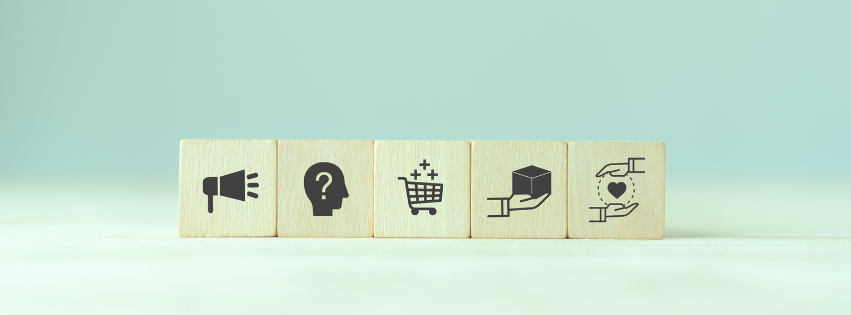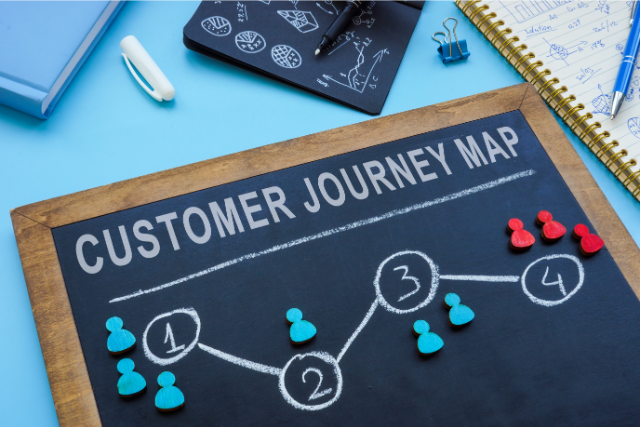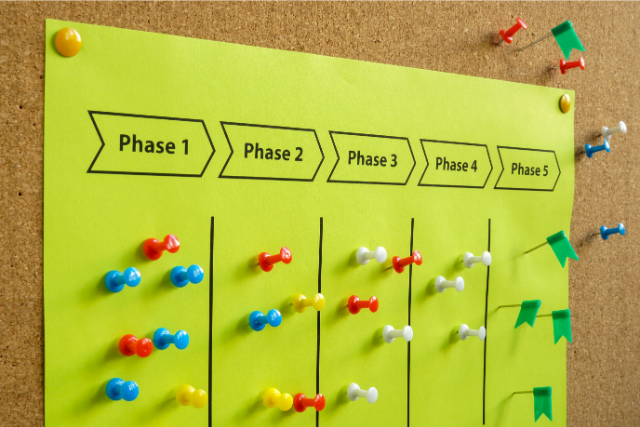
A customer journey, also known as a customer journey, is very important for every organization. By means of a customer journey, you map out the needs and behavior of (potential) customers. You can then adjust different strategies accordingly. By responding well to your company’s customer journey, the customer experience will improve and conversions and customer loyalty will increase. But how do you create a customer journey map? And how do you ensure that it actually benefits your business? We are going to tell you all about that in this blog!
What is a customer journey?
A customer journey is the total experience a customer has with a particular company, product, service, or brand before actually making a purchase. It includes all the steps and touchpoints (also known as touchpoints) that the customer goes through. This applies from the first point of contact to the purchase of the product or service or its final use.
What is the purpose of the customer journey?
The goal of the customer journey is to understand and improve the overall experience a customer has throughout the entire process of a purchase. You try to understand the customer’s needs, emotions, and experiences at every moment of the experience. In this way, this can be responded to in the future and certain contact moments with the customer can be optimized.

What are the phases of a customer journey?
The customer journey consists of several phases. Each phase describes a specific contact moment, also known as a touchpoint. Below, we will describe the phases of the customer journey.
Awareness
The first stage of the customer journey is awareness. During this phase, the customer comes into contact with a certain product, service or brand for the first time. This can be done through advertisements, recommendations from others, internet or social media searches. The goal is to capture the attention of potential customers and pique their interest during this stage.
Consideration
The second stage is also known as the consideration. After becoming aware of the offer, the customer begins to do more research and compare or consider alternatives. This phase consists of comparing different options, looking at specifications, prices, features, and reading reviews. The customer is trying to find out more in order to make an informed decision.
Decision-making
During the decision-making process, the customer gathered sufficient information. Now he makes the decision whether or not to purchase or use the service. Factors such as price, customer reviews, offers, and warranties play a role in the final decision-making process.
Purchase
The stage of purchase is what it’s all about. This is the moment when the customer actually purchases the product or service. The way this is done can vary depending on the company and the product. For example, it can be done through a physical store, an online store, by phone or any other purchase method.
Use & Service
After the purchase, the customer actually starts using the product or service. Using or performing a particular product and the correct manual or service with a service can lead to a positive or negative user experience. A positive user experience or good customer service will ensure that a repeat purchase is made more quickly. Customer intimacy can ensure a positive experience during use and the associated service.
Loyalty
During the final stage called loyalty, the goal is to get the customer to make a repeat purchase. In addition, a loyal customer can ensure that other potential customers are incentivized to make a purchase. If all previous phases have been positive, this phase will be the most successful. Businesses can drive loyalty by staying in touch with the customer after a purchase has been made.

Why a customer journey?
There are multiple reasons why a customer journey is so important for any business. First of all, it helps companies to put the customer at the center of their business processes. By understanding the customer journey, businesses can better respond to their customers’ needs and wants. In this way, they can ensure that their offer better meets the customer’s expectations. In addition, a suitable customer journey ensures satisfied customers. If customers have a good experience during the interaction process, they are more likely to return for repeat purchases and generate word-of-mouth referrals. Do you want to know more about customer loyalty and rewarding loyal customers? Then read this blog!
But that’s not all. By mapping out the customer journey, businesses can identify any pain points and bottlenecks in the process. This allows them to make targeted improvements to optimize the overall customer experience. In addition, it provides a competitive advantage. Businesses that succeed in providing a seamless and personalized customer journey can stand out from their competitors. Partly due to an effective marketing and communication strategy. In short, mapping the customer journey brings many benefits for every company, but also for all customers with whom you come into contact as a company.
How to go about it?
Do you want to map out your company’s customer journey, but don’t know how to go about it? Then read the tips below!
Tip 1: What is the purpose of the customer journey?
Mapping the customer journey can have many benefits for your business. Nevertheless, it is important that you have a clear understanding of why you want to map out the customer journey. For example, do you want to know what the customer’s needs are? Or do you want to know how you can ensure that you can improve the entire customer experience? By knowing what the purpose of your customer journey is, you will be able to research, analyze and ultimately optimize in a more targeted way.
Tip 2: Create personas
Create personas based on the customer journey. When you create a persona, you think about age, gender, interests, place of residence, income, or lifestyle. Think carefully about which personal characteristics may be relevant to the product or service. For example, it can provide good support for all marketing activities. With the help of a persona, it is possible to generalize a certain target group.
Tip 3: Create an action plan and evaluate
Have you mapped out the customer journey? Make sure that you actually make an action plan, implement it and evaluate it after a while. By continuing to research and optimize the customer journey, you will respond to (potential) customers, despite the changing wishes and needs.




